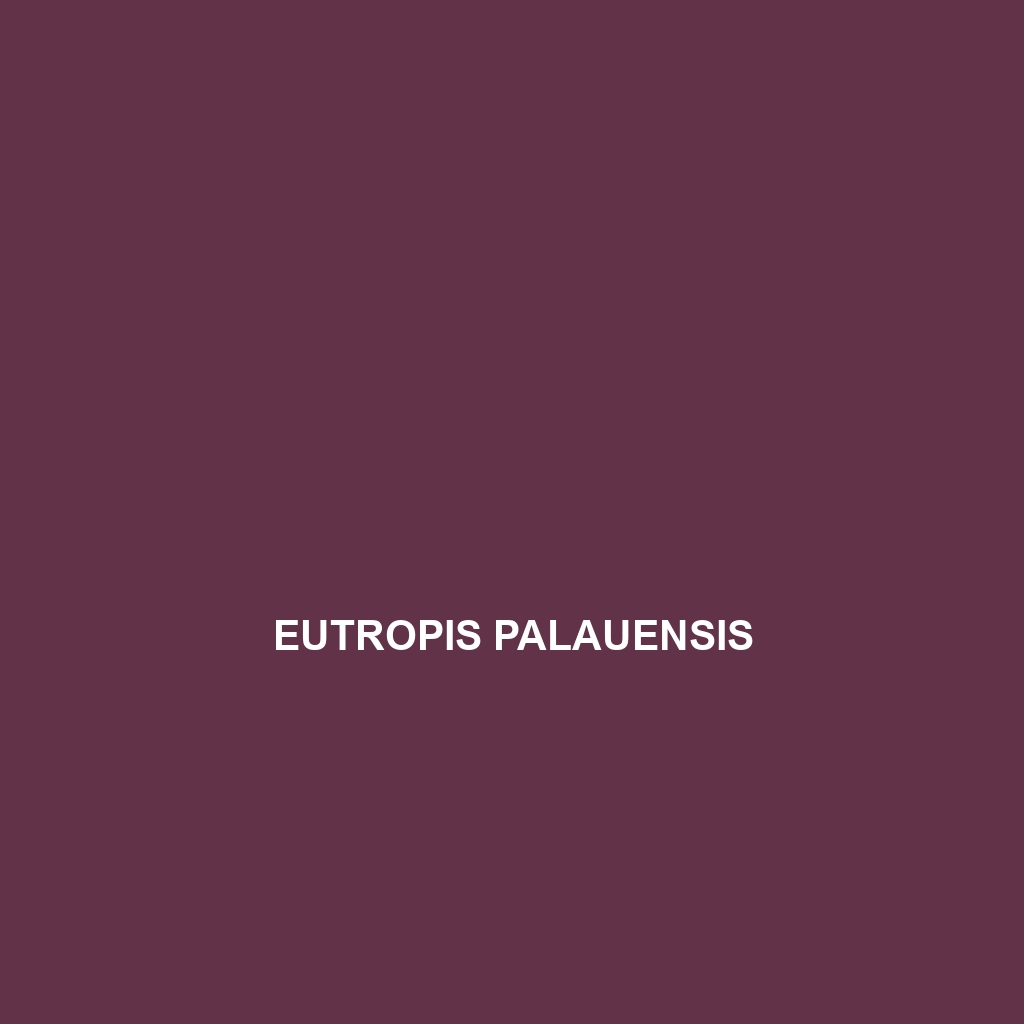Common Name
Eutropis palauensis
Scientific Name
Eutropis palauensis
Habitat
Eutropis palauensis, commonly referred to as the Palauan skink, is primarily found in the lush and diverse ecosystems of Palau, an archipelago located in the western Pacific Ocean. The species thrives in warm climates, particularly in humid tropical environments. Eutropis palauensis inhabits various ecosystems, including rainforests, coastal shrublands, and grasslands. This skink is often seen basking on rocks or logs within these habitats, taking advantage of the warm, sunlit areas while remaining close to the moist, shaded areas that provide shelter from predators and harsh weather conditions.
Physical Characteristics
The Eutropis palauensis is a medium-sized skink, which typically measures about 20 to 25 centimeters in length. Its body is slender and elongated, covered with smooth, shiny scales that exhibit a beautiful coloration. The dorsal surface is generally olive-brown to gray, with darker stripes or spots, allowing the skink to blend seamlessly into its surroundings, an essential adaptation for evading predators. The ventral side is lighter, usually a cream or pale yellow, contributing to its cryptic appearance. Its limbs are short but strong, equipped with sharp claws, enabling it to climb and navigate through its forested habitats effectively.
Behavior
Eutropis palauensis displays a range of fascinating behaviors, particularly in social interactions and activity patterns. This skink is primarily diurnal, meaning it is most active during daylight hours. It often engages in basking rituals to regulate its body temperature by sunning itself on rocks and logs. Socially, these skinks are generally solitary; however, during the mating season, males may engage in competitive displays to attract females. Courtship often involves elaborate visual displays, where males will exhibit their bright colors and perform intricate movements to impress potential mates.
Diet
Reproduction
The reproductive cycle of Eutropis palauensis is characterized by a distinctive breeding season triggered by seasonal rainfall and temperature changes. Mating typically occurs during the warmer months when conditions are most favorable. Females usually lay a clutch of 2 to 5 eggs in soft, moist soil, which serves as a protective environment for the developing embryos. The eggs incubate for approximately 60 days before hatching. The hatchlings are independent from birth, which is a crucial adaptation for survival in their competitive ecosystem. Parental care is minimal; however, females may remain close to the nesting area to monitor for potential threats.
Conservation Status
The conservation status of Eutropis palauensis is currently categorized as Least Concern according to the IUCN Red List. Despite its stable population, the species faces threats from habitat loss due to urban development and invasive species. Conservation efforts are in place to protect the natural habitats of Palau, which are vital for the survival of not only Eutropis palauensis but also many other endemic species. Increased awareness and sustainable management practices are essential to ensure that these ecosystems remain viable.
Interesting Facts
One of the most interesting aspects of Eutropis palauensis is its remarkable ability to adapt to various microhabitats within its range. This skink is often considered a key indicator species for the health of its ecosystem. Studies have suggested that the presence of Eutropis palauensis can indicate the overall biodiversity and stability of the environment. Additionally, its coloration and patterns may vary significantly between populations, showcasing a fascinating example of ecological adaptation.
Role in Ecosystem
Eutropis palauensis plays a crucial role in its ecosystem as both a predator and prey. As an insectivore, it helps control insect populations, contributing to ecological balance. Its presence also provides a food source for larger predators such as birds and small mammals, thus creating an essential link in the food web. Furthermore, by aiding in seed dispersion through its occasional plant matter consumption, Eutropis palauensis contributes to the health and regeneration of its habitat, affirming its status as a valuable component of the ecosystem.
